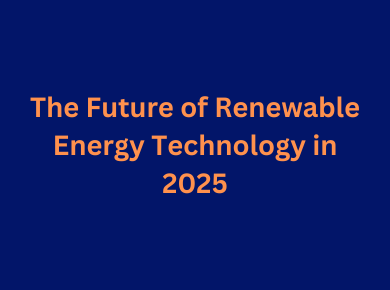As the world continues its urgent transition to sustainable energy systems, 2025 marks a pivotal year for renewable energy technology. With rapid technological advancements, supportive policies, and a global consensus on combating climate change, renewable energy is taking center stage. Let’s explore the key innovations and trends shaping the renewable energy landscape this year.
1. Breakthroughs in Solar and Wind Energy
Next-Generation Solar Panels
Traditional silicon-based solar panels are being overtaken by cutting-edge alternatives like perovskite solar cells. These new panels promise higher efficiency, lower production costs, and greater adaptability, making solar energy more accessible for both residential and commercial use.
Offshore Wind Expansion
Offshore wind farms are no longer confined to shallow coastal areas. Floating wind turbines, capable of operating in deeper waters, are expanding the potential for wind energy. These advancements allow countries with limited shallow-water coastlines to harness vast wind resources further offshore.
2. The Rise of Energy Storage Solutions
Grid-Scale Batteries
Energy storage remains a cornerstone of renewable energy integration. Lithium-ion batteries are being optimized for grid-scale storage, while solid-state batteries are emerging as a next-generation solution, offering higher energy densities and improved safety.
Hydrogen Storage
Green hydrogen, produced using renewable energy, is increasingly recognized as a versatile storage medium. It can store excess energy for extended periods and serve as a clean fuel for industries like steelmaking and transportation, where electrification is challenging.
3. Artificial Intelligence and IoT in Energy Systems
Smart Energy Management
AI-powered tools are transforming energy systems by optimizing generation, distribution, and consumption. For instance, predictive analytics can forecast energy demand, helping utilities allocate resources efficiently.
Decentralized Energy Solutions
The integration of blockchain technology and IoT devices enables peer-to-peer energy trading, allowing households and businesses to buy and sell surplus renewable energy directly. These innovations support a more decentralized and resilient energy grid.
4. Emergence of Agrivoltaics
Agrivoltaics, the practice of combining solar energy generation with agriculture, is gaining momentum. By installing solar panels above crops, farmers can simultaneously grow food and generate energy. This dual-use system boosts land efficiency, particularly in regions facing land scarcity.
5. Carbon Capture and Negative Emissions
To achieve net-zero emissions, renewable energy is being paired with carbon capture and storage (CCS) technologies. Bioenergy with carbon capture and storage (BECCS) is an innovative approach that removes CO2 from the atmosphere, creating a net-negative emissions scenario.
6. Policy and Investment Trends
Global Commitments
Governments worldwide are ramping up investments in renewable energy projects, spurred by international agreements like the Paris Accord. Policies supporting renewable energy adoption, such as tax incentives and subsidies, are accelerating deployment.
Emerging Markets
Emerging economies in Asia, Africa, and Latin America are becoming hotspots for renewable energy development. These regions benefit from international funding, technology transfers, and abundant natural resources, making them key players in the global energy transition.
7. Challenges to Overcome
Supply Chain Constraints
The renewable energy sector relies on critical materials like rare earth elements, essential for batteries and turbines. Ensuring a stable and sustainable supply of these materials is crucial to sustaining growth.
Grid Modernization
Many countries face the challenge of upgrading outdated grid infrastructures to accommodate the intermittent nature of renewable energy. Investment in smart grids and transmission networks is vital to ensure seamless integration.
Conclusion
Renewable energy technology in 2025 is more dynamic and promising than ever. Innovations in solar, wind, storage, and smart energy systems are driving us closer to a sustainable energy future. While challenges like resource constraints and grid modernization remain, the momentum toward renewable energy adoption is unstoppable. By leveraging these advancements, we can build a cleaner, greener, and more resilient energy system for generations to come.




